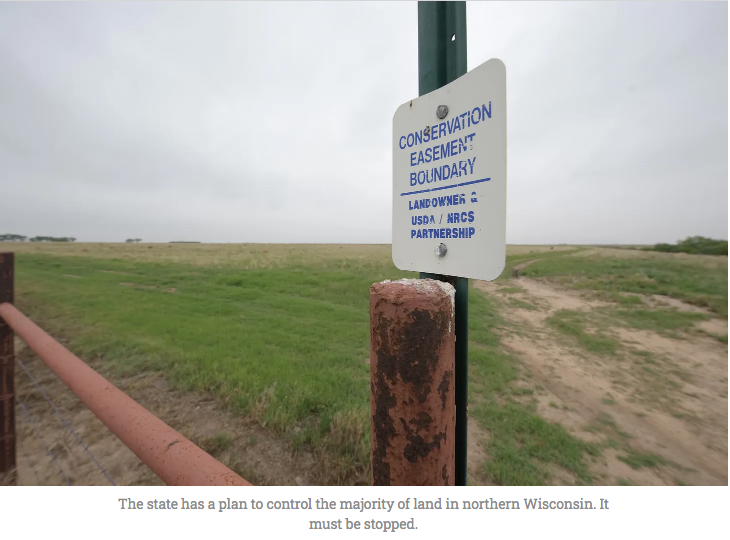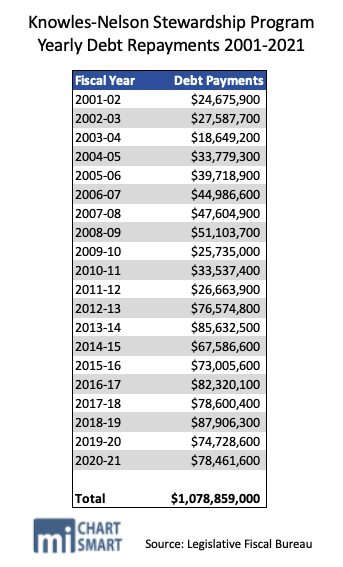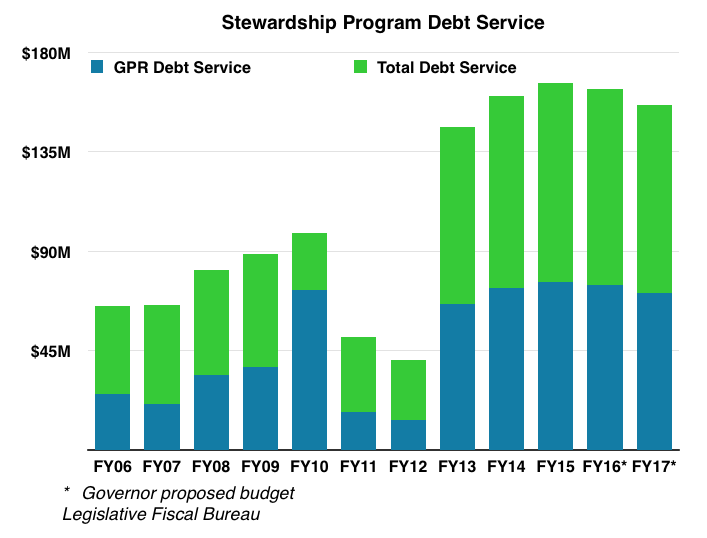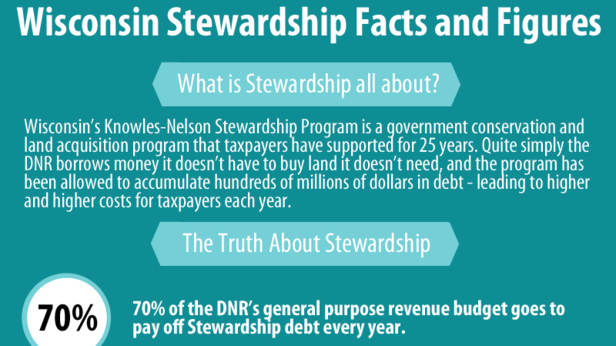
It’s time to put the Stewardship Fund permanently out to pasture
March 3, 2023
Perspective by Richard Moore
WI DNR has purchased vast tracts of land that will block any development forever—so much so that the ability of some of the poorest Wisconsin counties are in danger of being forever locked in a rural ghetto where opportunities will be… Click To Tweet
A titanic battle over the government’s control of land is ongoing right now in northern Wisconsin’s Oneida County and the outcome will have enormous consequences not just for the North but for all residents of the state.
The issue is simply this, the state of Wisconsin, via the DNR, has purchased vast tracts of land and is continuing to purchase conservation easements that will block any development on those lands forever—so much so that the ability of some of the poorest Wisconsin counties are in danger of being forever locked in a rural ghetto where opportunities will be few for the many and dreams for the future will be fewer still.
It is not hyperbole to say that we are in crisis, and most of the state doesn’t even know about it.
The specific skirmish involves the DNR’s attempted purchase of a conservation easement on 55,000 acres of the Pelican River Forest. The purchase—from the land’s private owner, the Conservation Fund—would cast 70,000 acres total into a conservation easement. That would be in perpetuity. As in forever. As in no development ever.
So far, the purchase has been blocked by at least four state senators who have lodged objections with the Joint Finance Committee, including state Sen. Mary Felzkowski (R-Irma)—the only thing holding it up. But the JFC could approve the purchase at any time. It is imperative that it does not.
The reason is pretty simple and straightforward: These purchases of land and easements have reached the point where they pose an existential threat to life in the Northwoods. This purchase alone would place more than 80 percent of the land in the town of Monico under government ownership and/or control, obliterating any chance the town would have to develop economically in the future. Just over 30 percent of all of Oneida County is owned by government—state, county, federal—and as the number of privately-held or controlled acres dwindles, so does any realistic chance to diversify and grow vibrant economies and robust, cohesive communities.
Speaking to the Oneida County board of supervisors this past week, Felzkowski put it this way:
The senator offered up some shocking statistics to underscore how extensive and far-reaching these land control schemes have become. All totaled, Felzkowski said, about 5.9 million acres of land in Wisconsin are publicly held:
The counties of Forest, Florence, Langlade, Lincoln, Oneida and Vilas—some of the poorest counties in the state—have 1.3 million acres of public land, Felzkowski said:
By contrast, Dane County is 3.8 percent public land, which is less than one half of 1 percent per resident, Felzkowski said.
It’s not just a growing threat to the ability of northern Wisconsin to have a sustainable economy, it is an onerous and growing burden to taxpayers across the state. The bottom line is, each one these purchases, whether it is from the state’s forestry account, as this particular purchase would be, or is paid for by borrowing through the Knowles Nelson Stewardship Fund, increases spending and, most often, debt.
Indeed, the vast majority of purchases are bonded through the Stewardship Fund. And what’s the status of that program?
According to Felzkowski’s office, as of December 2022, the Stewardship Fund has accumulated $452,995,930 of debt, which would cost taxpayers $579 million with interest if carried to maturity. In 2022-23, the state will pay a total of $63,975,932 in stewardship-related debt service, including $44.1 million in principal and $19.8 million in interest. That includes $26.4 million in principal and interest that had been paid as of December, 2022 and an additional $37.6 million that is scheduled to be paid in May 2023.
Editor’s note: As you can see, MacIver has been tracking the unnecessary spending of this program and the threat it poses to private property rights for some time.
The state typically makes two debt service payments each year, in May and November, the senator’s office states. Averaging the $64 million debt service payment the state is scheduled to make in 2022-23 over 52 weeks, as Felzkowski’s office calculated and pointed out in looking at the debt picture, the state will pay $1,230,306 in debt service every week, including $848,379 in principal and $381,927 in interest.
As for the Pelican River Forest land, in April 2022, the DNR purchased conservation and access easements on 12,410 acres but the Joint Finance Committee stopped that purchase, and Gov. Tony Evers used $4.5 million dollars in other state monies to end-run the JFC and fund the cancelled purchase, removing 12,410 acres in Oneida County from land available for future growth and tax base.
When you consider that the state is already paying more than $1.2 million a week to service the debt of this program, a program that is strangling the life out of northern Wisconsin, it is time not just to oppose this specific purchase but to shut down the Stewardship Fund altogether.
To read the rest of Richard’s column on why it is now the time to end the Knowles Nelson Stewardship program, click here.





